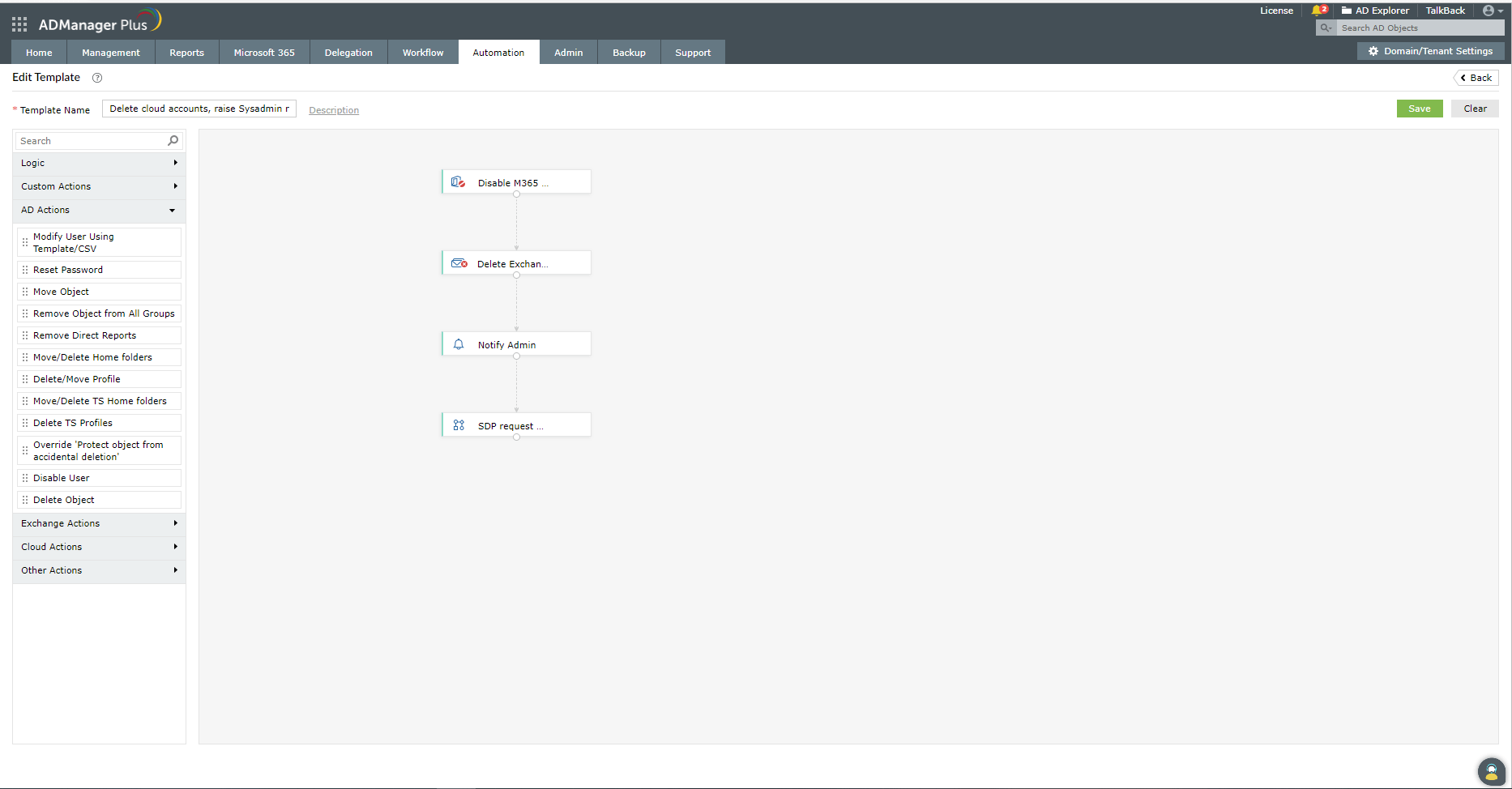- Related Products
- ADAudit Plus
- ADSelfService Plus
- EventLog Analyzer
- Exchange Reporter Plus
- AD360
- Log360
Orchestration
What is Orchestration?
Orchestration allows users to specify a sequence of tasks to be executed automatically, after a particular task is executed. The time delay between the tasks and the order of automated tasks can be customized via the Orchestration templates and Orchestration profiles.
For example, when user accounts are deprovisioned, all the associated accounts of that user like a Microsoft 365 account, Google Workspace, Exchange, etc. have to be removed. Their access permissions should be revoked, their accounts must be disabled, and so on. Manually cleaning up stale accounts is time-consuming but necessary because stagnant accounts could become potential security risks. Orchestration templates are essential in these scenarios as you can create an automated template with different components to suit your organization's needs.

What are the components of Orchestration?
Orchestration is composed of the following components which can be added as required:
- Orchestration template: Allows you to create orchestration, webhook, and notification templates to set up an automated flow of actions. The Orchestration template can be created by dragging and dropping blocks for various AD management actions, cloud actions, Exchange actions, webhooks, and notifications that need to take place sequentially.
- Event-driven Automation: A series of events in an Orchestration Template are executed following a successful action that meets the specified criteria.
- Webhook template: A Webhook allows an application to communicate with external applications that feature Rest APIs. With the webhook templates in ADManager, you can create a template to configure REST API endpoints, headers, params, action type, and messages, which can be added to your orchestration templates as blocks.
- Custom scripts: Along with webhook templates and notification templates, you can also configure custom scripts as blocks onto your Orchestration template.
- Logic: Logic blocks can be added to the orchestration templates either as decisions or time delay blocks. The decision blocks have the "if this, then that" functionality, while the time delay blocks allow you to configure the time delay between two subsequent actions.
- AD actions: AD management actions can be added to the orchestration templates by dragging and dropping them onto the action sequence from the list of available AD action blocks.
- Action sequences: The action sequences determine the course of sequential actions that take place once a specific action is triggered. This can be custom-built by dragging and dropping blocks in the orchestration template creation page.
The following sections will help you understand Orchestration better:
